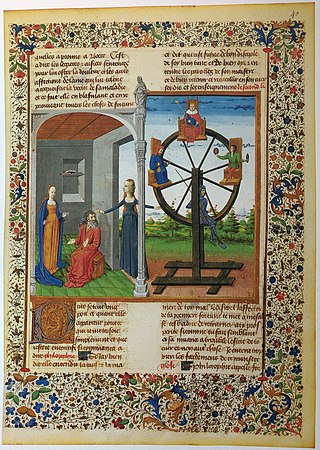
On the Consolation of Philosophy, often titled as The Consolation of Philosophy or simply the Consolation, is a philosophical work by the Roman philosopher Boethius. Written in 523 while he was imprisoned and awaiting execution by the Ostrogothic King Theodoric, it is often described as the last great Western work of the Classical Period. Boethius' Consolation heavily influenced the philosophy of late antiquity, as well as Medieval and early Renaissance Christianity.

The Canterbury Tales is a collection of twenty-four stories that runs to over 17,000 lines written in Middle English by Geoffrey Chaucer between 1387 and 1400. It is widely regarded as Chaucer's magnum opus. The tales are presented as part of a story-telling contest by a group of pilgrims as they travel together from London to Canterbury to visit the shrine of Saint Thomas Becket at Canterbury Cathedral. The prize for this contest is a free meal at the Tabard Inn at Southwark on their return.
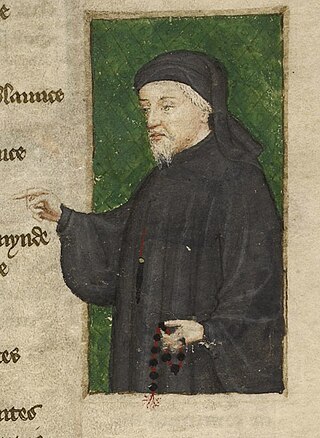
Geoffrey Chaucer was an English poet, author, and civil servant best known for The Canterbury Tales. He has been called the "father of English literature", or, alternatively, the "father of English poetry". He was the first writer to be buried in what has since come to be called Poets' Corner, in Westminster Abbey. Chaucer also gained fame as a philosopher and astronomer, composing the scientific A Treatise on the Astrolabe for his 10-year-old son Lewis. He maintained a career in the civil service as a bureaucrat, courtier, diplomat, and member of parliament.

"The Parson's Tale" seems, from the evidence of its prologue, to have been intended as the final tale of Geoffrey Chaucer's poetic cycle The Canterbury Tales. The "tale", which is the longest of all the surviving contributions by Chaucer's pilgrims, is in fact neither a story nor a poem, but a long and unrelieved prose treatise on penance. Critics and readers are generally unclear what rhetorical effect Chaucer may have intended by ending his cycle in this unlikely, extra-generic fashion.

"The Wife of Bath's Tale" is among the best-known of Geoffrey Chaucer's Canterbury Tales. It provides insight into the role of women in the Late Middle Ages and was probably of interest to Chaucer himself, for the character is one of his most developed ones, with her Prologue twice as long as her Tale. He also goes so far as to describe two sets of clothing for her in his General Prologue. She holds her own among the bickering pilgrims, and evidence in the manuscripts suggests that although she was first assigned a different, plainer tale—perhaps the one told by the Shipman—she received her present tale as her significance increased. She calls herself both Alyson and Alys in the prologue, but to confuse matters these are also the names of her 'gossib', whom she mentions several times, as well as many female characters throughout The Canterbury Tales.
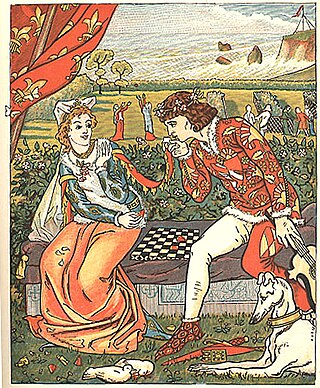
"The Franklin's Tale" is one of The Canterbury Tales by Geoffrey Chaucer. It focuses on issues of providence, truth, generosity and gentillesse in human relationships.
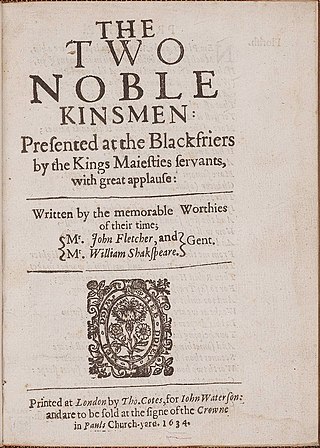
The Two Noble Kinsmen is a Jacobean tragicomedy, first published in 1634 and attributed jointly to John Fletcher and William Shakespeare. Its plot derives from "The Knight's Tale" in Geoffrey Chaucer's The Canterbury Tales, which had already been dramatised at least twice before. This play is believed to have been originally performed in 1613–1614, making it William Shakespeare's final play before he retired to Stratford-upon-Avon, where he died in 1616.

Troilus and Criseyde is an epic poem by Geoffrey Chaucer which re-tells in Middle English the tragic story of the lovers Troilus and Criseyde set against a backdrop of war during the siege of Troy. It was written in rime royale and probably completed during the mid-1380s. Many Chaucer scholars regard it as the poet's finest work. As a finished long poem, it is more self-contained than the better known but ultimately unfinished The Canterbury Tales. This poem is often considered the source of the phrase: "all good things must come to an end" (3.615).

"The Nun's Priest's Tale" is one of The Canterbury Tales by the Middle English poet Geoffrey Chaucer. Composed in the 1390s, it is a beast fable and mock epic based on an incident in the Reynard cycle. The story of Chanticleer and the Fox became further popularised in Britain through this means.
"Sir Thopas" is one of The Canterbury Tales by Geoffrey Chaucer, published in 1387. The tale is one of two—together with The Tale of Melibee—told by the fictive Geoffrey Chaucer as he travels with the pilgrims on the journey to Canterbury Cathedral. The tale concerns the adventures of the knight Sir Thopas and his quest to win the elf-queen.

"The Squire's Tale" is a tale in Geoffrey Chaucer's The Canterbury Tales. It is unfinished, because it is interrupted by the next story-teller, the Franklin, who then continues with his own prologue and tale. The Squire is the Knight's son, a novice warrior and lover with more enthusiasm than experience. His tale is an epic romance, which, if completed, would probably have been longer than rest of the Tales combined. It contains many literary allusions and vivid descriptions.
The Legend of Good Women is a poem in the form of a dream vision by Geoffrey Chaucer during the fourteenth century.
Philostrate is a fictional character in a number of literary works, including William Shakespeare's A Midsummer Night's Dream (1596). In that play, he is the Master of the Revels at Theseus' court, meaning he is in charge of his lord's entertainments, making recommendations to Theseus, as well as altering the text of some of the plays performed in his court. Shakespeare may have used this character to poke fun at play censorship in London at the time. In early performances of the play, the actor who played this character probably also played the part of Egeus, Hermia's strict father. There is only one scene in act V where both Egeus and Philostrate are present, and in this scene Egeus' character would have taken all of Philostrate's lines as his own.

Anelida and Arcite is a 357-line English poem by Geoffrey Chaucer. It tells the story of Anelida, queen of Armenia and her wooing by false Arcite from Thebes, Greece.
Fables, Ancient and Modern is a collection of translations of classical and medieval poetry by John Dryden interspersed with some of his own works. Published in March 1700, it was his last and one of his greatest works. Dryden died two months later.
Boece is Geoffrey Chaucer's translation into Middle English of The Consolation of Philosophy by Boethius. The original work, written in Latin, stresses the importance of philosophy to everyday life and was one of the major works of philosophy in the Middle Ages. As well as using philosophy to understand and deal with hardship, it is also an attempt by Boethius to improve the minds of the people in 6th century Rome by introducing them to Greek philosophy.
Palamon and Arcite is part of Fables, Ancient and Modern written by John Dryden and published in 1700. Palamon and Arcite is a translation of The Knight's Tale from The Canterbury Tales by Geoffrey Chaucer. Although the plot line is identical, Dryden expanded the original text with poetic embellishments. The source of Chaucer's tale was Boccaccio's Teseida. Translations include those by Percival Ashley Chubb (1899) and Walter William Skeat (1904).
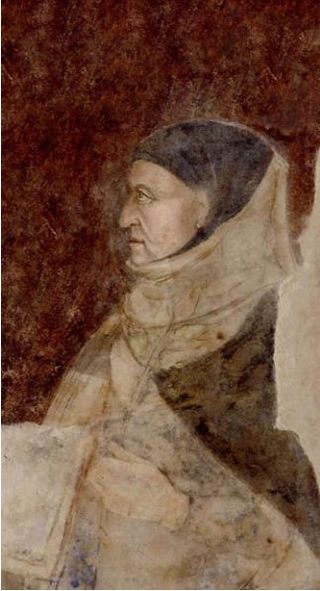
Teseida is a long epic poem written by Giovanni Boccaccio c.1340–41. Running to almost 10,000 lines divided into twelve books, its notional subject is the career and rule of the ancient Greek hero Theseus (Teseo), although the majority of the epic tells the story of the rivalry of Palemone and Arcita for the love of Emilia. It is the main source of "The Knight's Tale" in Geoffrey Chaucer's Canterbury Tales, and therefore is the original source of The Two Noble Kinsmen, a collaboration by William Shakespeare and John Fletcher. The exact sources of Boccaccio's knowledge about the ancient Greek world are unknown, but is likely that he gained the knowledge through his close friendship with Paolo de Perugia, a medieval collector of ancient myths and tales.
Palamon and Arcite (1566) is a play by Richard Edwardes, which was performed before Elizabeth I at Oxford. It is based on Chaucer's The Knight's Tale. Though the text of the play is lost, there is a detailed record of its structure and plot.

Anne de Graville or Anne Malet de Graville (c.1490–c.1540) was a French Renaissance poet, translator, book collector, and lady-in-waiting to Queen Claude of France. She hailed from one of the most prominent families in the country, and overcame scandal to become a well respected literary figure at the royal court. In addition to authoring two texts, she was an avid collector of books and manuscripts.














